
Welcome to CivilGEO Knowledge Base
Welcome to CivilGEO Knowledge Base

Welcome to CivilGEO Knowledge Base
Welcome to CivilGEO Knowledge Base
In hydraulic modeling, a time series node refers to a specific point or location within a hydraulic system where time series data are collected, analyzed, or specified. These nodes are used to define the time-varying boundary conditions or parameters at a particular location along a river or channel.
Time series nodes are commonly used to represent water levels, flow rates, velocities, or any other variable that changes over time. This information helps in project simulation and analysis, and sheds light on how these parameters fluctuate at different points in the hydraulic system, all of which provides insights into:
In GeoHECRAS, the user can create time series nodes on the Map View using the Assign Time Series Nodes and Draw Time Series Nodes commands. Both commands have similar functionality but somewhat distinct workflows.
The Assign Time Series Nodes command allows the user to manually assign an existing node on the Map View as a time series node.
Follow the steps below to use the Assign Time Series Nodes command:
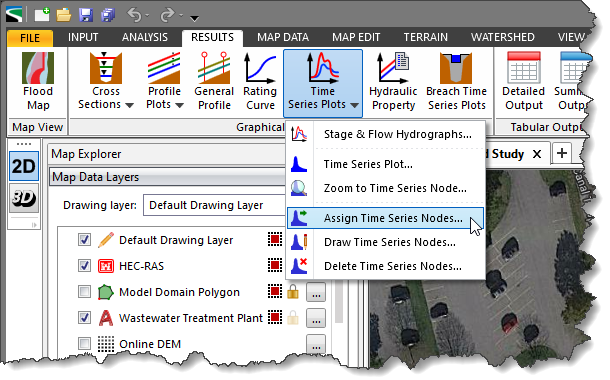
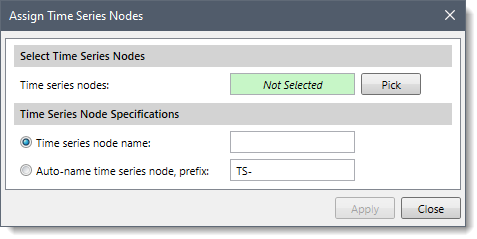
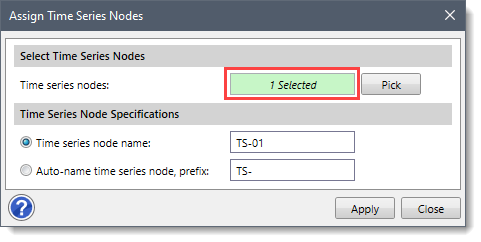 Notes:
Notes:
The Draw Time Series Nodes command allows the user to manually draw a time series node on the Map View.
Follow the steps below to use the Draw Time Series Nodes command:


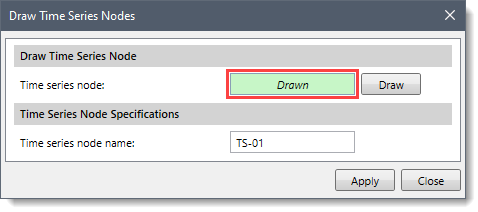
The Time Series Plot command of the GeoHECRAS software allows the user to request various types of output such as water surface elevation, velocity time series, and flow depth time series along the user-defined time series nodes.
Follow the steps below to use the Time Series Plot command:

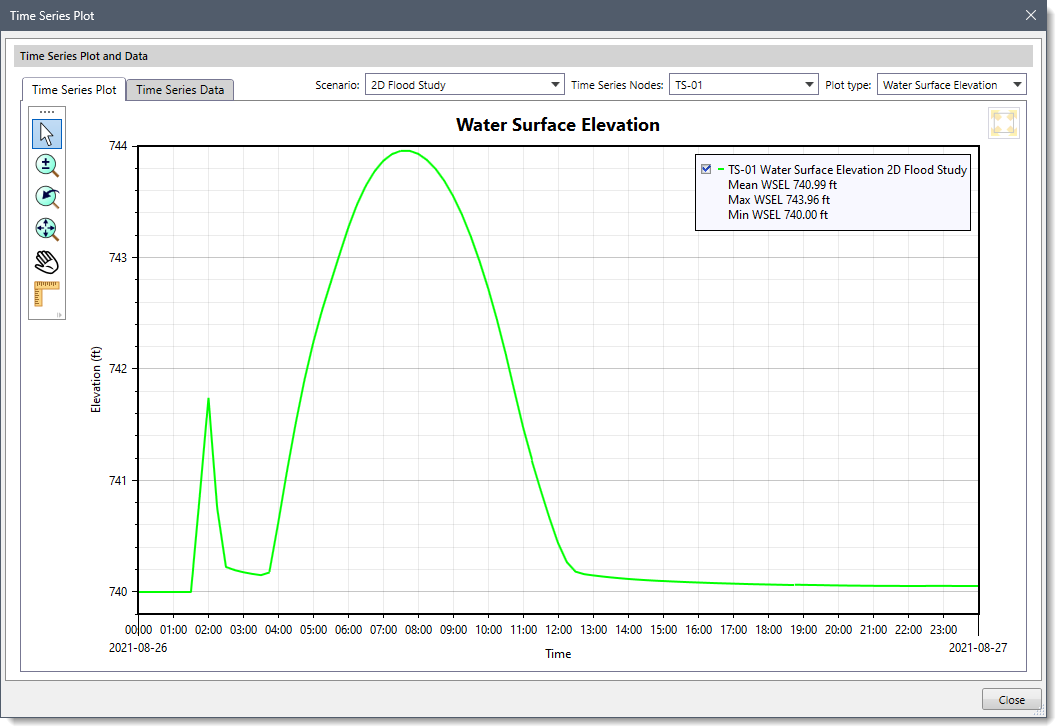
The following sections describe how to use the Time Series Plot command and interact with the above dialog box.
The Scenario dropdown combo box allows the user to view output results from different scenarios. To learn more about working with multiple scenarios, refer to this article in our knowledge base.
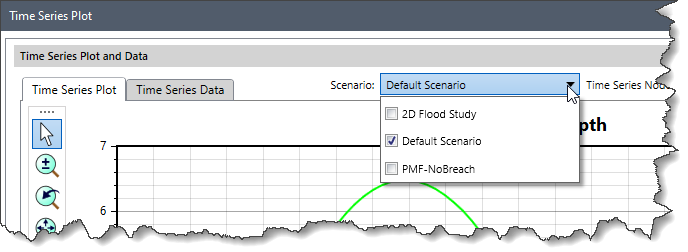
The Time Series Nodes dropdown combo box allows the user to select which output results from time series node to display. The plot can display output results for multiple time series nodes at the same time.
Note that the user can check the Select All checkbox to select all the time series nodes at once.
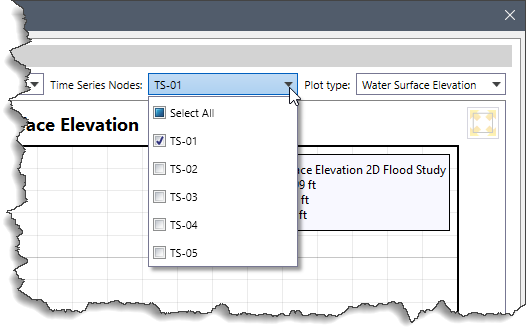
The Plot type dropdown combo box allows the user to view various types of data output along the selected time series node(s). The following options are listed in the dropdown combo box:
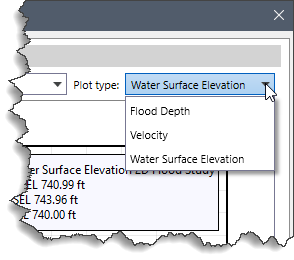
The GeoHECRAS software also allows the user to create professional printouts of time series node plots and to save them as image files as well as export them to PDF files. To print or export the results of a time series node plot into a different format, right-click anywhere on the plot and select the Export to PDF, Save as Image, or Print options.
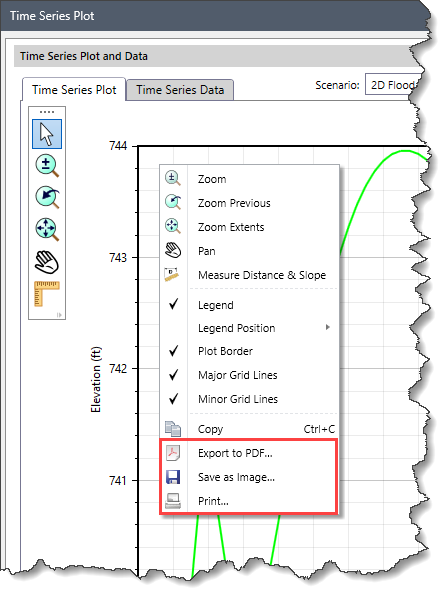
The Time Series Data tab contains a table that displays results for the selected time series node(s).
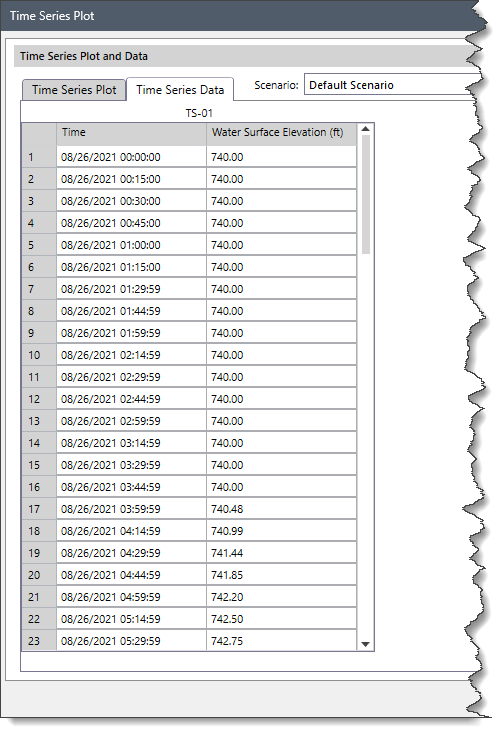
The Delete Time Series Nodes command allows the user to selectively delete the user-defined time series nodes from the project.
Follow the steps below to use the Delete Time Series Nodes command:
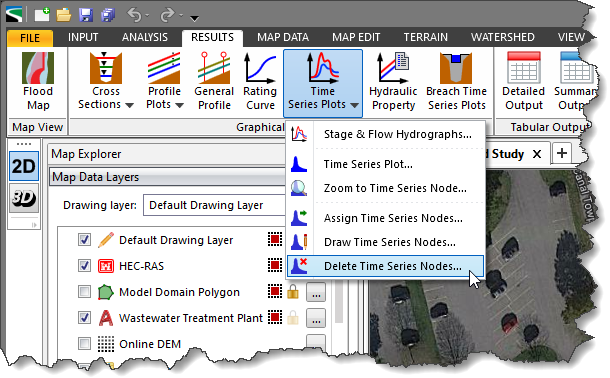

![[Pick] button](/wp-content/uploads/sites/25/2024/03/Time-Series-Nodes-Img-16.png) Note: To select all the time series nodes at once, click the [Select All] button..
Note: To select all the time series nodes at once, click the [Select All] button..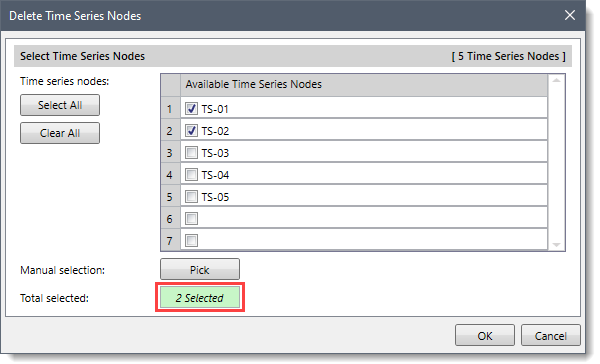 Note: To cancel the previous selection and redo the entire process, click the [Clear All] button.
Note: To cancel the previous selection and redo the entire process, click the [Clear All] button.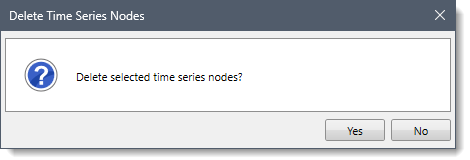
The Zoom to Time Series Node command allows the user to selectively zoom to the user-defined time series nodes on the Map View.
Follow the steps below to use the Zoom to Time Series Node command:
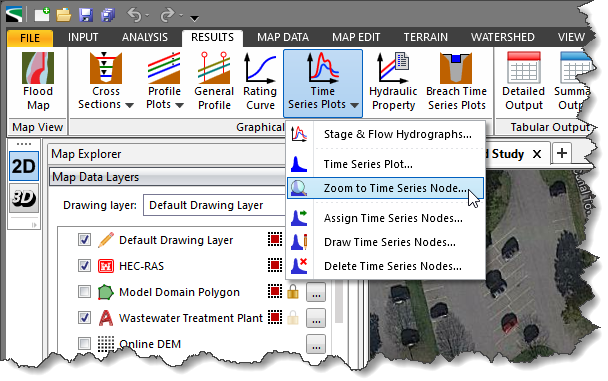
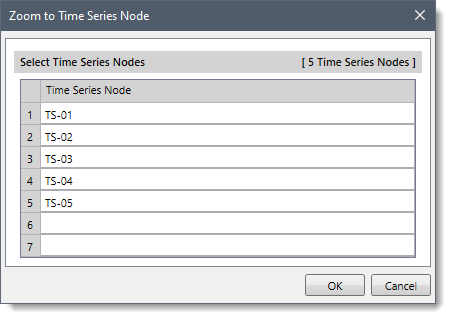
![[Ok] button](/wp-content/uploads/sites/25/2024/03/Time-Series-Nodes-Img-21.png)
 1-800-301-02-955
1-800-301-02-955
 608-729-5100
608-729-5100
(US and Canada)
 [email protected]
[email protected]
 +1 608-729-5100
+1 608-729-5100
CivilGEO India
Graphix Tower, A-13 A
3rd Floor, Sector 62
Noida, Uttar Pradesh 201309
IndiaTel:
1-800-301-02-955 or
+91 022-3831-8601
CivilGEO United States
8383 Greenway Blvd
6th Floor
Middleton, WI 53562
USATel:
608-729-5100 or
800-488-4110
Copyright © CivilGEO, Inc. All rights reserved. The CivilGEO logo, “GeoSTORM”, “GeoHECHMS”, “GeoHECRAS”, and “Ready To Engineer” are registered trademarks of CivilGEO,Inc.
All other brands, company names, product names or trademarks belong to their respective holders.
We use cookies to give you the best online experience. By agreeing you accept the use of cookies in accordance with our cookie policy.
When you visit any web site, it may store or retrieve information on your browser, mostly in the form of cookies. Control your personal Cookie Services here.
The ZoomInfo WebSights snippet drops three cookies to track Unique Visits:
1. _pxhd - Related to the Perimeter X security layer (Perimeter X isused to prevent bot attacks).
2. _cfduid - Related to the CloudFlare security layer (CloudFlare is the Network Security protocol that ZoomInfo uses to orchestrate the rate limiting rules).
3. visitorId - This is how WebSights identifies recurring visitors








